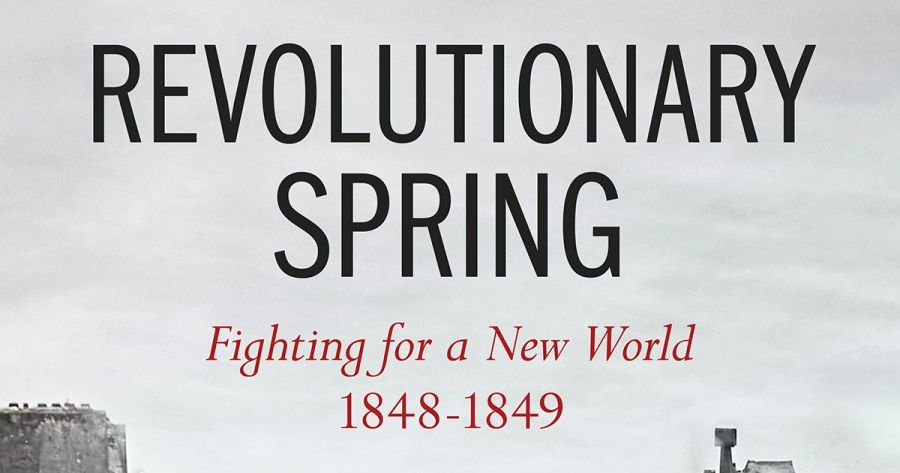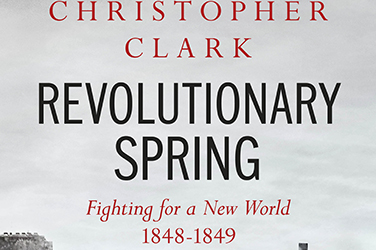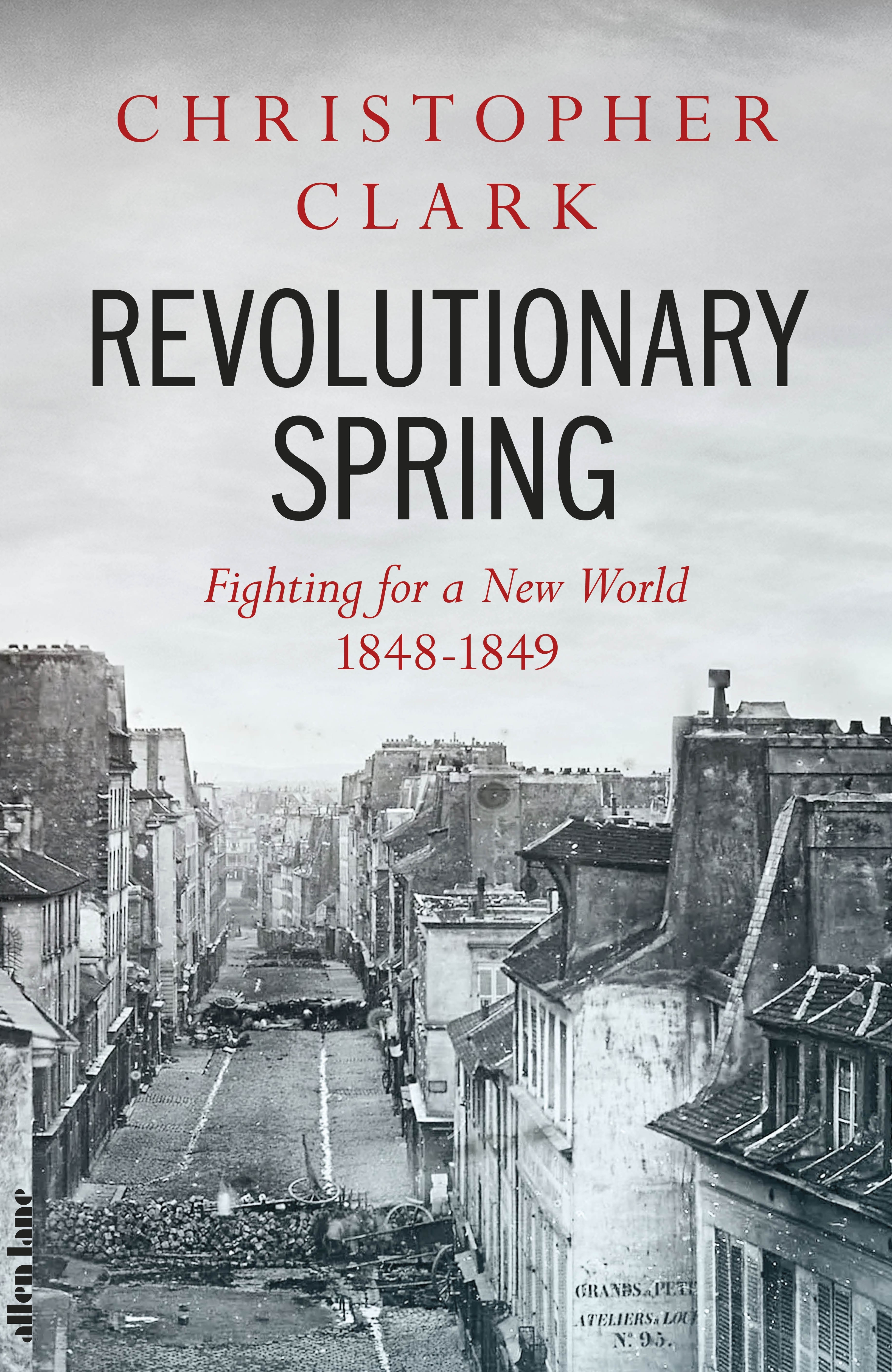
- Free Article: No
- Contents Category: History
- Review Article: Yes
- Article Title: Global polycrisis
- Article Subtitle: A kaleidoscope of revolutionary action
- Online Only: No
- Custom Highlight Text:
There are two powerful images evoked by the waves of revolutions that broke across Europe in 1848. The first is of ‘the springtime of the peoples’, when scores of popular insurrections overturned the conservative Metternich system of a balance of power between monarchical regimes that had ruled the continent since the overthrow of Napoleon Bonaparte in 1815. In France the core demand was popular democracy. Elsewhere, demands for self-determination were linked to dreams of national unity in Germany and Italy, and further to the east to the desire for independence from the Austrian and Russian empires.
- Featured Image (400px * 250px):

- Alt Tag (Featured Image): Peter McPhee reviews 'Revolutionary Spring: Fighting for a new world, 1848–1849' by Christopher Clark
- Book 1 Title: Revolutionary Spring
- Book 1 Subtitle: Fighting for a new world, 1848–1849
- Book 1 Biblio: Allen Lane, $75 hb, 900 pp
- Book 1 Cover Small (400 x 600):

- Book 1 Cover (800 x 1200):

The second, mirror image of 1848 is of tragedy. As the English historian G.M. Trevelyan put it in 1937, this was ‘the turning-point where modern history failed to turn’. Incompetent leadership and violent ethnic hostilities undermined the prospects for successful democratic reform in central and eastern Europe. Within eighteen months, counter-revolution ended the dreams of freedom, often under the hooves of rampaging cavalry; in Hungary, most bloodily, hopes for reform were crushed by the troops of Tsar Nicholas I. The deepest tragedy was that, in the German states, national unity and self-determination were to be achieved later by military might under Bismarck, with deadly consequences for later European history.
Clark is not so pessimistic. Certainly, this was a revolutionary tide that was everywhere in retreat by the end of 1848; he stresses, however, that there were some concrete reforms, such as representative democracy in the Netherlands and France, and the abolition of serfdom in Hungary and Austria. Once conservative regimes had regathered, they slowly implemented constitutional and democratic change to staunch future revolutionary challenges. Social democracy, feminism, and communism were only some of the durable ideological challenges unleashed on the social order. The winds of change would not die down.
A graduate of the University of Sydney, Clark is Regius Professor of History at Cambridge University and author of a series of fine books on modern European history, most notably The Sleepwalkers: How Europe went to war in 1914 (2012). His new book is based on prodigious scholarship. There are almost 2,000 footnotes to material in a dozen languages, from Romanian and Russian to Italian and Portuguese. The breadth of Clark’s research sets his achievement apart from other surveys of the revolutions of 1848.
The geographic spread and resonances of the revolutions make this an ideal subject for transnational or global history, now a flourishing new field very different from traditional international history and far more difficult to write because of its demands for proficiency in languages. Clark’s is a brilliant attempt to produce this. He describes with extraordinary assuredness the kaleidoscope of revolutionary action from Galicia in present-day Ukraine to Barcelona and Valencia. There are unusually good sections on the emancipation of France’s remaining slaves in its Caribbean and Indian Ocean colonies (most slaves had been freed in Saint-Domingue [Haiti] in 1793) and on the thwarted hopes of activist women, Jews, and Roma. Patriarchy and prejudice were challenged, but survived.
Clark documents the polarised reception of news of revolution globally, from Ceylon to Chile, and in remaining slave societies such as the United States and Brazil. In Australia, where news of the February Revolution in Paris only reached Sydney on 19 June 1848, the impact would be felt through the revolutionary exile Raffaello Carboni, who fled repression in Rome in 1849 then participated in and wrote famously about the Eureka Stockade in 1855.
A key theme of Clark’s book is the tension, ultimately fatal, between liberals seeking to restrict change to political reform and radical democrats and socialists seeking power to resolve ‘the social question’. Were new ‘national assemblies’ in Germany, Austria, Ukraine, and elsewhere only advisory bodies to existing authorities or sovereign and democratic? In Paris, working-class disappointment at dashed hopes for social change erupted in the June Days of 1848, in which up to 3,000 insurgents were killed by the army, inspiring Karl Marx to interpret events in his classic The Class Struggles in France, 1848–1850 (1850). Clark respects Marx’s brilliance, but has a contrasting framework, stressing the positive outcomes of the mid-century crisis as a stepping-stone to later liberal reform, proficient administration, and economic progress.
Given its scale and complexity, Clark’s tome is not an easy read, despite being studded with fascinating details. The revolutions do not erupt until page 265. But his achievement is enormous, with one major weakness. Peasants made up four-fifths of the population of Europe, and their responses to upheaval were to be crucial to the outcomes of revolutions. But they are not really of interest to Clark, despite the great riches of social history available to him. Only one brief section considers them as political actors, and Clark is content to see them as parochial, often brutal, and mostly conservative. He ignores, for example, the peasant-based left-wing surge in the French elections of 1849, the basis of a long-term political tradition in the south of the country.
In our own times, the popular insurrections of 2011–12 dubbed ‘the Arab Spring’ led many commentators to draw parallels with the revolutions of 1848. Was this another dramatic moment when the exhilaration of emancipation from repressive regimes foundered as ruling élites regrouped, often with bloody consequences? Clark sees the similarities, although in 1848 it was newspapers and word of mouth that spread the news rather than social media.
The parallels with 1848 draw him into some final reflections about the prospect of revolution today, which he sees as both likely, given the range of crises (the ‘polycrisis’) across the globe, but also as inherently fractured, as in 1848: ‘poorly planned, dispersed, patchy and bristling with contradictions’. Clark knows the pitfalls of reading history backwards, of projecting our own values onto the past, but was ‘struck by the feeling that the people of 1848 could see themselves in us’.


Comments powered by CComment